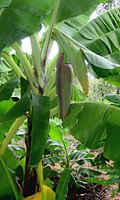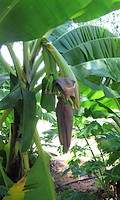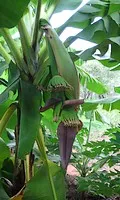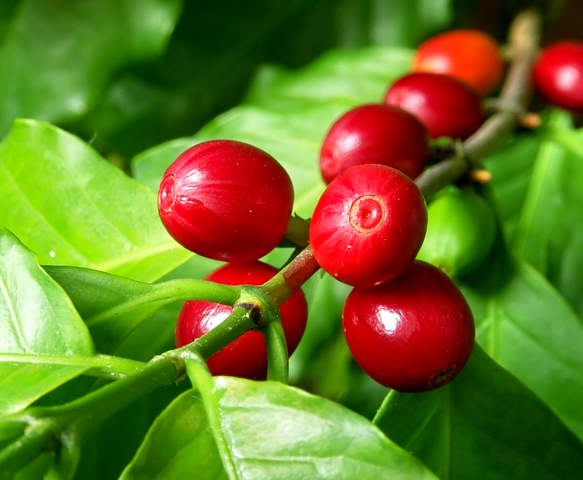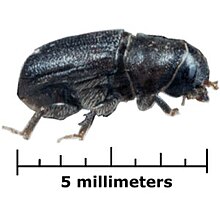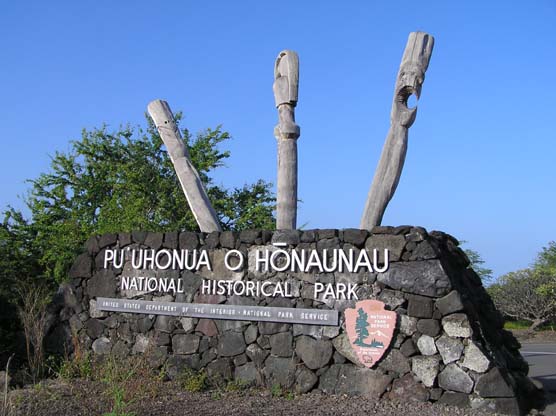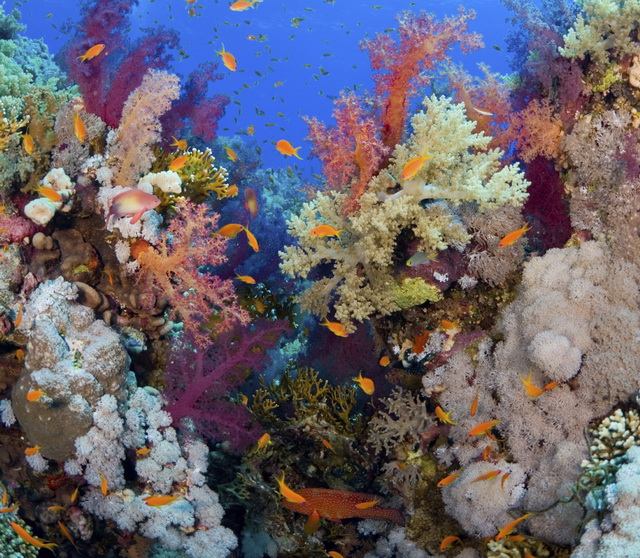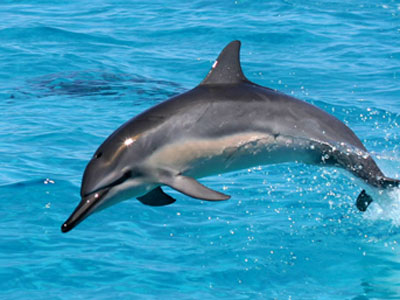 |
| 'Ohi'a lehua flowers grow below me. I'll talk about them in a bit. |
What an incredible day at the volcano! According to the ranger at the park, due to the rising pressure in the heart of the volcano, the lava is visible for the first time since 1967! What a once in a lifetime opportunity!
The volcano in the photo above is the gigantic Mauna Loa. Mauna Loa towers 13,677 feet above sea level and more than 56,000 feet above it's ocean floor base. If that wasn't enough, it is also the largest mountain in the world reaching over 10,000 cubic miles in volume. Despite the fact that the Big Island is composed of five young volcanoes, Mauna Loa is the biggest, taking up more than half of the Island's land mass.
 |
| Lava flowing in the Mauna Loa crater. |
While Mauna Loa is the largest volcano on the Big Island, Kohala is the oldest. Kohala last erupted around 60,000 years ago, whereas another of the volcanoes, Mauna Kea, erupted over 4,600 years ago. The remaining three volcanoes have all erupted in the last 250 years. Hualalai in 1801, Kilauea in 1983, and Mauna Loa in 1984. When I found out about the similar eruption dates of Kilauea and Mauna Loa, I began to question why the dates were so close together. A diagram at the information centre at Mauna Loa answered my question.
Judging from this diagram it appears that Mauna Loa and Kilauea share the same hot spot plume. Hot spot plumes contain the magma that rises up to the volcano with the right amount of pressure. The pressure must have been very high in 1983-1984 for both eruptions to occur. However, it appears that several other volcanoes also share the same plume. How come they didn't erupt as well?
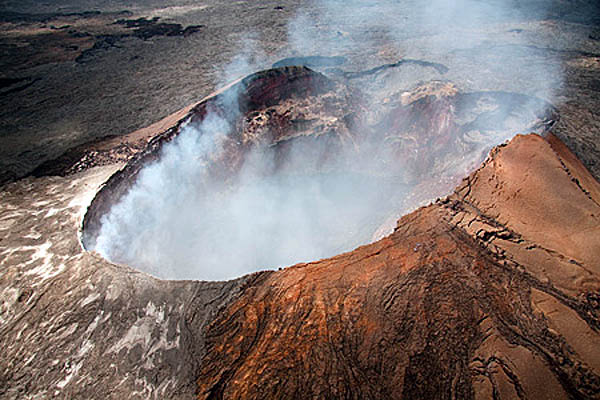 |
Kilauea
Photo Reference: greentravelerguides.com |
 |
| Photo Reference: lehuaukulele.com |
As you can see from the photos in this post, there is very little vegetation around the volcano. The hard and hot lava rock and high gas pressure of the air make it difficult for plants to find a healthy home around the volcano. However, the 'Ohi'a lehua flowers, (shown growing in the first photo and the photo above) have an interesting adaption. The 'Ohi'a lehua flowers close their stomata (mini structures typically found on the outer skin of the leaf) when the gasses from the volcano come too close. The stomata (which literally means mouth in Greek) of the plant is in charge of allowing the carbon dioxide, water vapour, and oxygen to travel in and out of the leaf. It is incredible that the plant is able to differentiate between the sulfuric dioxide of the volcano and the carbon dioxide in the air. How do the plants sense this? Is it the cells in the stomata that detect the difference? How quickly does the stomata react and close shut when the plant senses a change in the atmosphere? Since the volcano releases 4,000-8,000 tons of sulfuric acid a day, how much sulphuric acid does the plant successfully block out? How long does it take for the stomata to open back up again?
Not only was the volcano dispersing sulfuric acid into the air, but fibers of molten material that come together and create what looks like strands of hair.
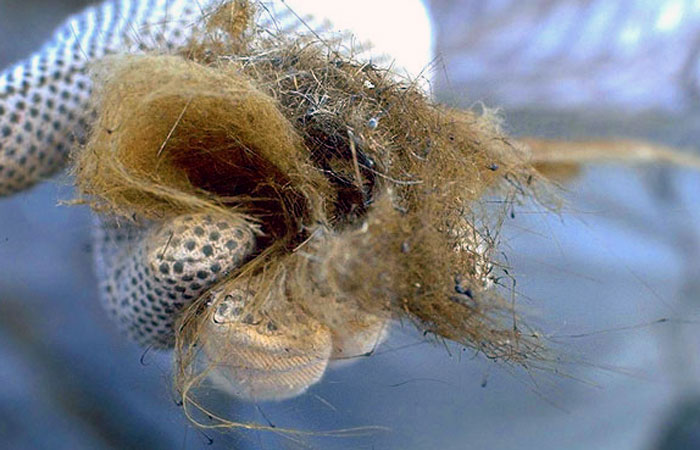 |
A large sample of Pele's hair.
Photo Reference: swissduc.ch |
 |
Pele's hair rests on the surface of hardened lava at Kilauea volcano.
Photo Reference: volcanoes.usgs.gov |
Named after the Hawaiian volcano goddess, Pele, the "strands" of Pele's hair is made from volcanic glass fibers that get pulled into strands from the pressure of molten eruptions. Pele's hair has a diameter less than 0.5 millimetres and a length up to 2 meters long. Although the photos above make it look like there is tons of Pele's hair laying around, unfortunately, I was only able to find a tiny strand barely the size of my finger.
 |
| Basalt Glass |
Pele's hair isn't the only product of eruptions, the lava fountains in Hawaii create various different volcanic particles. The shape and texture of the particles differ because the lava is highly fluid with gases as it flies into the air. However, most of the particles are basalt glass. Basalt glass forms when the lava is rapidly chilled.
Another interesting fact about the Hawaii volcanoes is that there are two different kinds of lava, Aa (pronounced ah-ah) and Pahoehoe (pronounced pay-hoy-hoy). Despite their similar environment, Aa and Pahoehoe are very different.
 |
Aa Lava Flow
Photo Reference: web.archive.org |
 |
Pahoehoe Lava Flow
Photo Reference: web.archive.org |
As you can tell from the photos above, Aa lava flows have a very rough exterior, whereas pahoehoe lava is extremely smooth. Aa lava flows are often over 10 meters thick, whereas pahoehoe lava flows are usually 1-2 meters thick.
All in all, it was an incredible day at the volcano. I learned so much and experienced such an amazing site. I'll leave you with a photo I took of the volcano when I went back up to view the volcano again at night.




